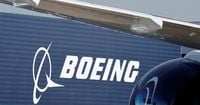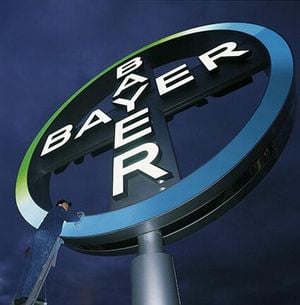On Saturday, October 4, 2025, an unexpected event aboard Air India flight 117 reignited safety concerns about the Boeing 787 Dreamliner. As the aircraft, a 12-year-old Boeing 787, approached Birmingham, UK, from Amritsar, India, its emergency power system—known as the ram air turbine (RAT)—suddenly deployed at an altitude of around 400 to 500 feet, mere seconds before landing. Despite this surprise, the pilots managed a safe touchdown at 7:07 pm local time, and all passengers and crew disembarked without incident. But the incident has sent ripples through India’s aviation sector and beyond, stoking memories of a fatal Dreamliner crash just months earlier.
The RAT, a small propeller-like device mounted on the aircraft, is designed as a last-resort backup: it automatically deploys to provide vital hydraulic or electrical power if both engines fail, if all three hydraulic systems lose pressure, or if cockpit instruments lose power. According to Skybrary, a respected aviation resource, "modern aircraft only utilise RAT in emergency: either in the event of loss of hydraulic systems or following the loss of primary electrical generation. In these cases the RAT will power vital systems such as flight controls or flight-critical instrumentation, navigation and communication equipment." Some RATs, the site notes, produce only hydraulic power, which then powers an electrical generator.
What made Saturday’s episode so alarming was that, after the RAT deployed, a detailed inspection revealed that all electrical and hydraulic parameters were normal. Air India’s official statement, cited by multiple outlets including Reuters and The Times of India, reassured the public: “The operating crew of flight AI117 from Amritsar to Birmingham on Oct 4, 2025, detected deployment of the Ram Air Turbine (RAT) of the aircraft during its final approach. All electrical and hydraulic parameters were found normal, and the aircraft performed a safe landing at Birmingham. The aircraft has been grounded for further checks and consequently, AI114 from Birmingham to Delhi has been cancelled and alternative arrangements are being made to accommodate the guests. At Air India, the safety of passengers and crew remains top priority.”
But the incident’s timing—so soon after a deadly crash involving the same aircraft model—has heightened scrutiny. On June 12, 2025, an Air India Boeing 787-8 Dreamliner crashed in Ahmedabad, killing 260 people, including 19 on the ground. A preliminary investigation by India’s air safety regulator found that the RAT had also deployed during the crash, but for a clear reason: the fuel control switches for both engines were moved from the “run” to the “cutoff” position just after takeoff, causing a sudden loss of power. In that case, the RAT performed its intended function—providing emergency power in a true crisis. The similarity in systems involved, but the stark differences in circumstances, have left many in the aviation community uneasy.
Charanvir Singh Randhawa, president of the Federation of Indian Pilots (FIP), which represents about 6,000 pilots, voiced his concern bluntly: "It's a serious concern that warrants a detailed inquiry." He added that, in his five decades in aviation, he had "never heard of the RAT system being deployed even when there are no problems in the engines, hydraulics or electrical systems, as appeared to be the case over the weekend." In response, the FIP has formally requested that India’s Directorate General of Civil Aviation (DGCA) investigate the electrical systems of all Boeing 787 Dreamliners operating in the country. According to an email from the FIP to aviation ministry officials, the union is urging a thorough check to ensure passenger safety and prevent a recurrence.
The DGCA has responded by assigning the investigation to a senior air safety official and is demanding more information from Boeing about the incident. As reported by Reuters and GuruFocus, India’s Civil Aviation Minister Ram Mohan Naidu has said, “Once we get to know more details, we are going to reach out to the necessary stakeholders to see what we need to do so that these things don’t happen.” The DGCA’s inquiry aims to clarify why the RAT deployed when all systems appeared normal and to determine whether a hidden fault or software glitch could be at play. Boeing, for its part, has issued a "fleet team digest" summarizing previous similar cases and is cooperating with regulators to address the situation.
Saturday’s incident has also had immediate operational impacts. The Dreamliner involved was briefly grounded in Birmingham for checks, leading to the cancellation of Air India flight AI114 from Birmingham to Delhi. While the aircraft was cleared for service by Sunday evening, Air India was reportedly weighing whether to fly it back to India as a regular passenger flight or as a ferry (without passengers), pending further investigation results.
The renewed scrutiny comes at a challenging time for Boeing. Despite its reputation as a titan in the aerospace and defense industry—competing head-to-head with Airbus, Lockheed Martin, and Northrop Grumman—Boeing is currently navigating financial turbulence. According to GuruFocus, Boeing reported a three-year revenue growth rate of -1%, with an operating margin of -12.45% and a net margin of -14.18%. Its debt-to-equity ratio stands at -16.18, signaling high leverage, and the Altman Z-Score of 1.26 places it in the “distress zone,” which implies a possibility of bankruptcy within two years. Still, Boeing’s stock has gained 23.2% in 2025, and institutional investors retain confidence, with ownership at 87.35%.
Yet, regulatory scrutiny is intensifying. The unexpected RAT deployment is just the latest in a series of technical and safety challenges that have dogged the 787 Dreamliner program. Boeing’s manufacturing of the 787 has been consolidated in North Charleston, South Carolina, since 2021, after the closure of the original assembly line in Everett, Washington. The company’s global services segment, which provides aftermarket support to airlines, is now under pressure to reassure customers and regulators alike that the Dreamliner is safe and reliable.
For passengers and crew, the stakes are clear. As the FIP and India’s aviation authorities dig deeper into the cause of the RAT deployment, travelers are left to weigh the assurances of airlines and manufacturers against the unsettling reality of back-to-back incidents. The question lingers: was this a one-off anomaly, or a symptom of a deeper problem lurking within the Dreamliner’s complex systems?
With investigations ongoing and the world watching, the aviation industry is once again confronting the delicate balance between innovation, safety, and public trust. The coming weeks will be critical in determining whether the Dreamliner’s reputation can weather yet another storm.





